Classification of potatoes by type
There are about 4,000 different varieties of potatoes in the world. The State Register of Russia includes about 300 varieties that are approved for cultivation in the country. They all differ from each other, so choosing the right one can be difficult. In the article we present more than 15 names of potatoes, classified by groups and photos.
What are the characteristics of potatoes?
Potatoes are usually divided into categories according to several characteristics.:
- purpose (the ultimate purpose for which the crop is grown);
- color (take into account the shade of the peel and pulp);
- ripening time;
- productivity;
- resistance to environmental factors.
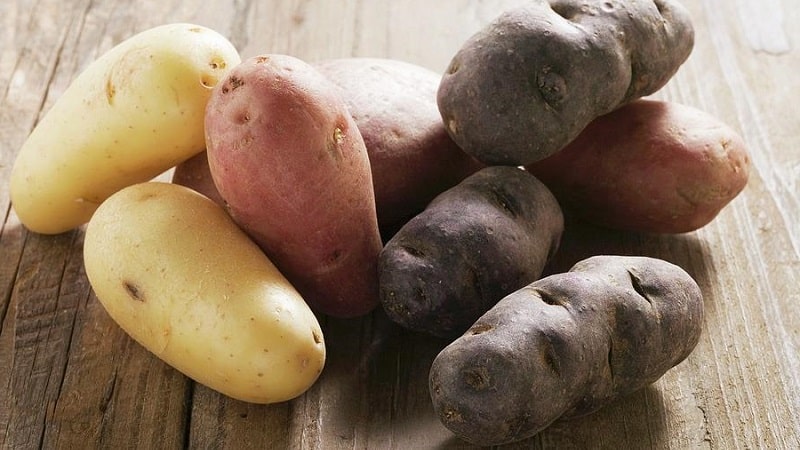
Types of potatoes by purpose
Potatoes are divided into varieties according to purpose:
- Dining rooms. IN tubers contains about 18% starch, as well as beta-carotene, vitamins and other valuable substances. Table potato varieties are grown for human consumption.
- Technical. This product is used only for processing to obtain starch and alcohol.
- Feed. The pulp contains a lot of protein and starch. Such vegetables are recommended for animal feeding.
- Universal. The high content of proteins and starch (16-18%) allows the tubers to be used for feeding livestock. Good taste characteristics make them suitable for culinary purposes.
Table potatoes are divided into several subcategories:
- A. The pulp is dense and watery. Powderiness is completely absent or minimal. When cooking, the tubers do not become soft. The product is used for preparing salads and okroshkas.
- IN. The pulp is moderately watery, dense and slightly mealy. During heat treatment it boils slightly. Best suited for stir frying and soups.
- WITH. Potatoes have moderately mealy, soft and slightly watery flesh. Suitable for frying, boiling in their skins, making purees.
- D. This type includes all varieties with tubers of a soft, mealy consistency, which are used for making purees and baking.
Differences in potato skin and pulp color
The peel of this vegetable can be of several colors:
- white;
- yellow or light brown;
- red (this shade occurs due to anthocyanins - natural antioxidants that strengthen the walls of blood vessels);
- purple (color intensity directly depends on the concentration of anthocyanins).
The pulp also has different colors:
- white;
- cream or yellow - the darker the shade, the greater the amount of beta-carotene present in the vegetable;
- red-violet - they are resistant to unfavorable conditions, such as cold snaps and droughts.

Classification of potatoes depending on ripening time
The most important characteristic of potatoes is the ripening period. This is the time period from the emergence of seedlings to the harvest. According to ripening time, all existing varieties are divided into several categories.:
- super-early (or ultra-early);
- early;
- mid-early;
- mid-season;
- late.
Ultra early
The ripening period of such potatoes varies between 35-50 days. You can get 2 harvests per season. The main disadvantage is short storage. Of the very early ones, the most popular were:
- Alyona. The tubers are characterized by reddish skin and creamy flesh. They have an oval shape and weigh 120-130 g.Due to their good taste characteristics, they are suitable for frying and making soups and purees. They ripen in just 45-47 days. From 1 sq. m with proper care they can harvest up to 4 kg.
- Riviera. The small, round tubers of this potato can be identified by their yellowish-brown skin and yellow cut. If all care recommendations are followed, the harvest is obtained within 35 days after the sprouts appear.
- Ariel. The variety was developed by Dutch breeders. These are large tubers with light skin and yellow flesh. They contain about 18-19% starch. The growing season is 45-47 days. From every hundred square meters of the garden it is possible to dig up to 450 kg of vegetables.

Early
Early varieties have a growing season of 50 to 65 days. Russian farmers prefer the following:
- Karatop - German potato variety. It is distinguished by smooth oval tubers with a minimal number of eyes on a yellowish peel. Each tuber reaches 90-140 g. The light beige pulp has a granular structure and contains 13% starch. Karatope ripens quickly, approximately 60 days after germination. Each bush usually produces up to 25 potatoes.
- Lark. The variety was developed by domestic breeders. Lark is well suited for cultivation in most of Russia. Oval, slightly flattened tubers are covered with a brown skin, under which there is light pulp. Vegetables are harvested after 50 days. Each bush produces 12-15 tubers.
- Impala. Developed in Holland, this potato is distinguished by its light skin and yellowish cut. Its tubers are large (up to 150 g), oval, smooth, with a minimum number of small eyes. Gardeners often prefer Impala for its excellent taste and fast ripening - harvesting begins in 55 days.

Mid-early
In mid-early species, the growing season lasts from 65 to 80 days. Names of potato varieties:
- Rowanushka. The tubers weigh up to 120 g, have yellow flesh and are covered with pink skin, on which rare reddish eyes are visible. The starch content is average, the taste is high. Rowan is highly valued as a table variety. You can start harvesting potatoes after 70-80 days.
- Duckling. Oval, slightly uneven tubers weigh up to 250 g. Beneath the yellow-brown skin there is delicate yellow flesh that does not darken when processed. The duckling withstands arid climates and is immune to late blight, scab, and potato cancer. Ripens within 65-70 days.
- Red Scarlett. Potatoes were developed in Holland, but have become widespread in many countries. One of the advantages is the attractive appearance of the tubers. They are oblong, smooth, covered with pink skin. When cut, creamy flesh is visible. From one hundred square meters they get up to 420 kg.
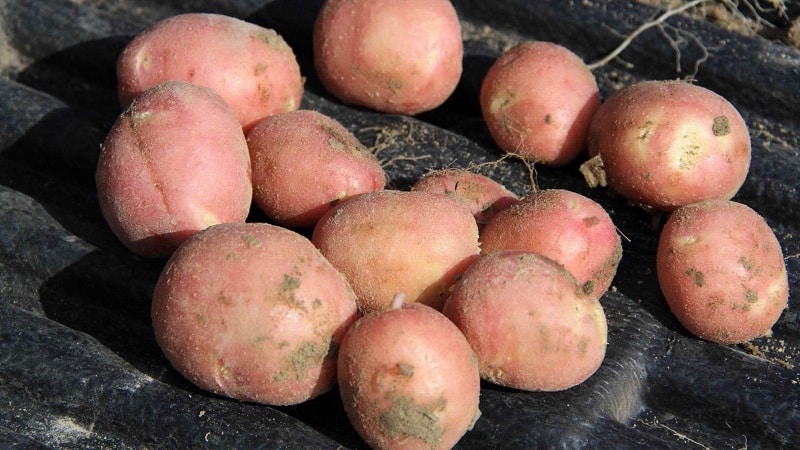
Mid-season
These potatoes take longer to ripen, usually from 80 to 95 days. Despite the fact that you have to wait longer for harvest, mid-season varieties have significant advantages, such as long storage, high taste characteristics and good yield. Among them:
- Hannibal, or Sineglazka. The variety is not included in the State Register, but is loved by gardeners. It was obtained selectively in the post-war years. Hannibal is excellent for cultivation in most of Russia. Potato tubers weighing up to 200 g are covered with gray skin with purple eyes. They contain 15% starch. It is best to use Sineglazka for pureeing and baking.
- Agatha. The tubers are characterized by medium size (about 110 g), pleasant yellow color of the peel and pulp. The tubers are usually ellipsoidal in shape. Agatha does not require special care and grows in any climate. With good care, after 85 days from 1 sq. m harvest up to 240 kg.
- Mistress. Another mid-season potato variety that is in high demand among Russian farmers. Large reddish oval-shaped tubers often reach a weight of 120-180 g. Beige, evenly colored flesh is visible on the cut. 18-20 tubers are formed under one bush. They ripen within 80-90 days.

Late ripening
There are late potato varieties that require at least 120-140 days to ripen. The following vegetables are harvested in August – September:
- Zdabytak. These potatoes were obtained by Belarusian breeders. Its main difference is the increased starch content (about 28%). Large (up to 120 g) tubers are covered with ruby skin. The inside of the vegetable is colored beige. The harvest is harvested 120-130 days after planting. From 1 bush you get about 15-18 tubers.
- Lorch. The variety was bred in Russia. The tubers are oval with gray skin. They weigh 120 g. Inside the potatoes are milky-beige in color. Lorch contains 20% starch, it has excellent taste and good shelf life - up to 96%.
The most popular table varieties
Some table potato varieties are in high demand thanks to its excellent taste:
- Picasso. This is a Dutch variety that is distinguished by multi-colored peel - brown with purple streaks. The pulp is tasty, does not become overcooked, and is suitable for most types of dishes.
- Share. Individual tubers weigh about 400 kg. Pai is highly valued for its tasty pulp and yield of up to 380 kg per 100 sq. m.
- Tuleevsky. Among the top ten varieties in the country. It is universal in use, has high immunity to viral diseases, and is resistant to drought and frost.
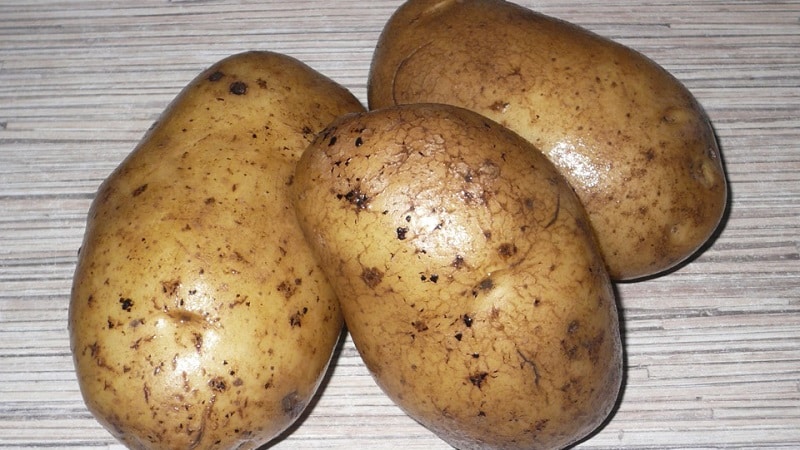
Types of potatoes depending on the growing region
In the Urals and Siberia sudden changes in temperature are common. Such conditions are destructive for many cultivated plants. For this reason they choose frost-resistant options:
- Governor and Lyubava;
- Among the mid-season varieties, it is worth choosing Effect, Lukyanovsky, Korona, and Kaspiya varieties.
They grow well in the Leningrad region and the North-West region:
- Krinitsa;
- Dewdrop;
- Eliseevsky;
- Lena;
- Hope;
- Latona.
Most varieties are suitable for soil in the Black Earth Region early, mid and late ripening potatoes.
Climate of the Moscow region characterized by high humidity, and the land here is considered not the most fertile. In such conditions the following are successfully grown:
- Timo Hankkiyan;
- Ramon.
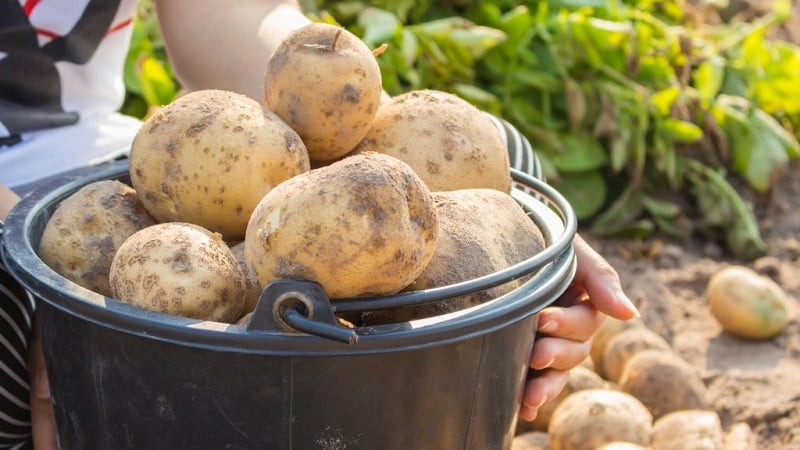
The most resistant varieties
Breeders have also managed to develop a number of potato varieties that have increased resistance to adverse environmental factors, such as drought, temperature changes and frost.
Drought resistant
In extreme heat, moisture from the soil evaporates extremely quickly. Most crops do not tolerate such conditions well. When choosing a potato variety, special attention should be paid to the following::
- Ramona;
- Volzhanin;
- Rodrigo.
Frost-resistant
If the region does not have a warm climate, it is better to choose frost-resistant varieties for planting.. Otherwise, the crop will not ripen. Experienced farmers recommend the following:
- Alyona;
- Baron;
- Red Star;
- Latona;
- Luck;
- Zhukovsky early.
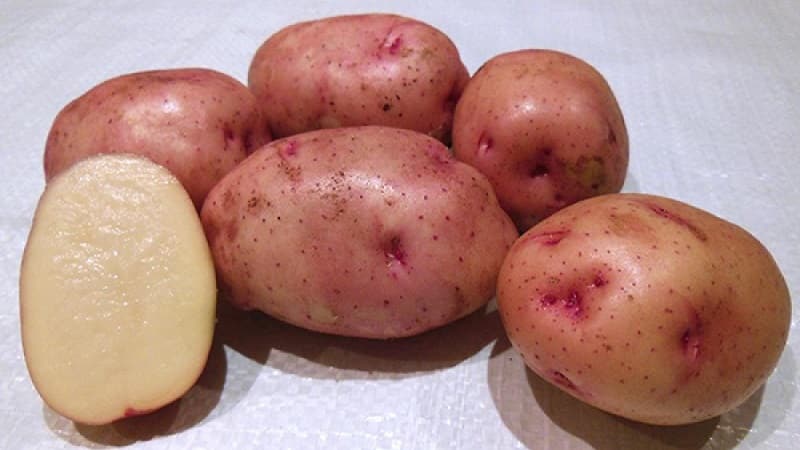
Immune to changing weather conditions
When temperature changes occur, preference is given to the following varieties:
- Aspia;
- Nevsky;
- Blue.
The most productive varieties
Often when choosing a potato variety for planting, the first thing to consider is productivity. Maximum quantity of potatoes per 100 sq. m of land they give:
- Luck - about 1400 kg;
- Zhuravinka - up to 640 kg;
- Gala - about 600 kg;
- Idaho - approximately 560 kg;
- Queen Anne - from 480 to 500 kg;
- Favorite - up to 425 kg.
The best seed varieties
It is not possible to compile a list of the best seed varieties, but it is worth highlighting several options that allow you to get maximum yield using a minimum amount of planting material:
Conclusion
To get a good potato harvest, it is important to carefully select the variety. Experienced farmers and gardeners advise starting the search taking into account the climatic conditions of the region. After this, care requirements and yield indicators are compared.